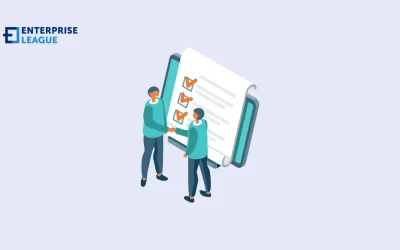Transparency is a great way to boost seed grants for nonprofits. Several channels offer nonprofits the opportunity to raise money, such as crowdfunding, local community events, and buying donor lists. Successful nonprofits marry good business practices with these channels to raise grants regularly.
How to secure seed grants for nonprofits
Here are a few ways to help your organization to secure seed grants for nonprofits.
Examine your funding model
Most nonprofits do not consider the nature of their donors before applying for grants. For instance, a local clinic covered by Medicaid doing community work and a nonprofit funded by a government agency both receive public funds. However, the people involved in approving funding are completely different, as are their aims.
Also, the audiences these nonprofits aim at will likely be vastly different. Some nonprofits aim to establish a heartfelt connection by appealing to a wide audience. The Make-a-Wish foundation is an example of this funding model. Others like the Cleveland Clinic rely on former beneficiaries of their services to raise money.
The simplest model is the one where nonprofits charge their members a monthly fee. Each of these models has its advantages. Take the time to choose the right one for your nonprofit. If your organization does not have a ready-made way to distribute important information or recruit a large number of donors quickly, following the Make-a-Wish model is unlikely to yield any results.
You might be better off by leveraging your existing network and relying on a few big donors. Alternatively, if you can highlight a public good your organization will achieve, government funding is a great resource to raise money.
If none of these options work for you, consider reorienting your model to that of a beneficiary broker. In this model, you connect those in need with services offered by the government and receive a fee from the government in return. The Metropolitan Boston Housing Partnership is a good example of a nonprofit that successfully uses this model.
Conduct grant prospect research
To secure grants for non profit organizations, doing your due diligence is a must. Grants application evaluators are perhaps one of the most critical audiences nonprofits must appeal to, and it’s well worth taking the time to apply properly. The sad reality is that many nonprofits neglect conducting research before the application process and mistakenly think that just submitting paperwork is enough.
Think about it like a job interview. Grantmakers receive a mountain of applications, so you need to be creative in making your application stand out. The easiest way to do this is by conducting research into your grantmaker’s needs and their history with past applications.
For instance, does the organization fund causes in your area? Do they have a track record of funding causes similar to yours? Each grant application is different so take the time to double-check the requirements. If in doubt, hire an experienced grant writer who can research for you.
When applying for grants, you must quantify or demonstrate the impact you have had on those in need. You must prepare beforehand and collect any material in the formats the grantmaker requests. Taking a look at previous funded causes will give you an idea of what they need and what data you must have handy.
Often, the best way of figuring out a grantmaker’s needs is to call them. Ask them questions and get to the bottom of what they’re looking for. You’ll also manage to build a relationship with them, something that will help you immensely in the future.
Apply for the right grants
Some nonprofits find themselves getting rejected a lot because they apply for grants that aren’t a good fit. Sure, they might fit the cause, and the grantmaker might have a track record in that area. However, you must consider your size, the impact you have made, and the grantmaker’s needs before applying.
For example, if you do not have a lot of experience raising money through grants, applying for the largest opportunities does not make sense. Your competition will likely be far more experienced and have the relationships that matter.
Instead, going small and local is a great way to tilt the odds in your favor. You should also benchmark against other nonprofit organizations operating in your area or within your cause to figure out your likelihood of success.
Securing a grant often boils down to preparing a lot before applying. Unfortunately, some nonprofits treat the application process as a lottery and apply to everything out there, hoping something sticks. This approach will create a negative impact in the long term since failing to raise grants repeatedly will damage your reputation amongst donors.
While securing a grant is a great thing, check whether you and the grantmaker are a good fit. Accepting grants (or applying for them) from organizations that are misaligned is unlikely to win you donor support, something that is critical if you wish to sustain your nonprofit in the long run.
Double-check your math
This is a basic piece of advice, but many nonprofits still ignore it: Double-check your math and make sure your numbers check out. Calculate your budgets and have someone else scrutinize them before you include them in your grant application.
You could have a great application, but include shoddy math, and you’ll lose all goodwill, leading to rejection almost certainly. Common numerical errors include padded numbers, unrealistic budgets, and misrepresenting your plans. Some organizations believe they need to exaggerate numbers to win a grant, but this is false.
Always be realistic with your numbers, and you’ll win a grant that’s a good fit for your organization.
Conclusion
Winning a grant might seem like a tough task, especially given the increasing competition for them and the need to prove impact. However, with a little preparation and research per the tips in this article, nonprofits can ensure they place themselves in the best position to win them.
More must-read stories from Enterprise League:
- Innovative and profitable business ideas with no employees.
- Pros and cons of social media for business you should be aware of.
- Golden rules about Google advertising for small businesses.
- Importance of online privacy laws in the digital era and how they protect us.
- Motivating business role models to inspire your entrepreneurial spirit.
Related Articles
10 business tips for beginners to help you build a healthy brand
Starting a business can be quite the challenge especially if you’re all new to entrepreneurship. These business tips for beginners will help you set off on the right foot.
SEO writing: Five foolproof tips to secure you the first page
When it comes to SEO writing it’s more guessing and less evidence about what works and what doesn’t. Luckily, we know what can really help you reach the first page.
How to onboard a new employee: Tips for quick integration
Your guide to smoother employee onboarding where you will find practical strategies that help new hires feel welcome and become productive team members faster.
10 business tips for beginners to help you build a healthy brand
Starting a business can be quite the challenge especially if you’re all new to entrepreneurship. These business tips for beginners will help you set off on the right foot.
SEO writing: Five foolproof tips to secure you the first page
When it comes to SEO writing it’s more guessing and less evidence about what works and what doesn’t. Luckily, we know what can really help you reach the first page.






